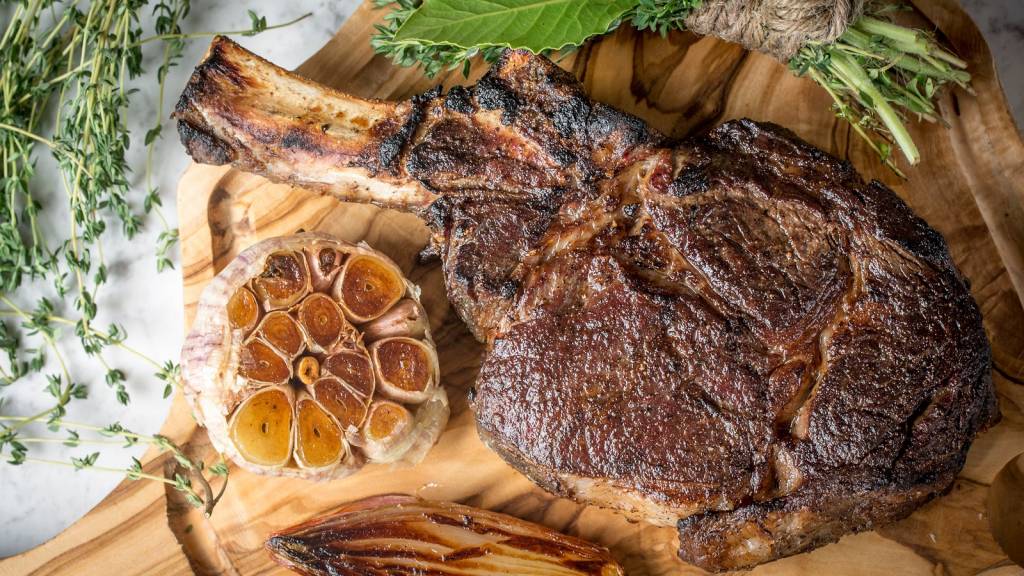How to Order a Steak Like a Pro
Thursday 17 March 2016

Confused by all the cuts of beef? Worried about size, or (gasp!) asking for the ‘wrong’ degree of doneness? Let Executive Head Chef Ben Waugh of Savoy Grill, and previously of maze Grill, guide you to steak nirvana.
Chateaubriand
Chateaubriand is typically shared between two people and even then feels luxurious. ‘It’s very lean and succulent,’ says Ben. It comes from the thickest end of the fillet, also known as the fillet head. ‘The muscle sits under the ribcage where it is protected and does not move much during the animal’s life, which makes it very tender,’ he explains. Best served medium-rare.
Côte de Boeuf
A very thick piece of rib-eye left on the bone. Also known as bone-in prime rib, côte de boeuf is one to choose when you’re feeling indulgent. It’s a very large piece of meat and the bone protects the flesh while cooking so it’s nice and rare up against the bone.
Fillet
Fillet is highly prized and premium-priced because (as with Chateaubriand) the muscle does not do a lot of work during the animal’s life and is therefore extremely tender. Some people prefer cuts with a stronger flavour and will happily sacrifice a little of fillet’s tenderness for it. The tail end of the fillet is the proper cut for steak tartare.
Hanger
Also known as onglet, this comes from the diaphragm or skirt of the beast. It’s one of the most fashionable steak cuts because it’s comparatively inexpensive yet full of flavour. ‘Hanger steak shouldn’t be cooked more than medium-rare,’ says Ben. ‘The meat is quite fibrous so if it’s overcooked, it’s very chewy.’
Porterhouse
A thick T-bone cut specifically from the largest end of the joint so that only one or two porterhouse steaks are gleaned from each hindquarter. ‘It’s a bit of a statement,’ says Ben. ‘You’re having a huge piece of cow. Even the fillet section of it will be 180 to 200g.’
Rib-eye
Taken from the neck end of the fore rib, this is a moderately tender steak and deservedly popular. ‘Rib-eye is my favourite cut because of the marbling in the meat,’ says Ben. ‘It has a higher fat content than most steaks and fat is where the flavour’s at.’
Rump
Rump (and sirloin) are good steaks to choose if you want a lot of beefy taste without compromising too much on tenderness. ‘It’s a slightly cheaper option that will still give a full flavour,’ says Ben, ‘but for me rump is not as enjoyable as rib-eye or fillet.’
Sirloin
Sirloin has a good balance of tenderness, texture and flavour. Its main advantage is that the fat is a strip on the outside of the steak, so is easy to trim off if you don’t want to eat it. Sirloin on the bone is often overlooked as a grill steak but it’s perfect for surf and turf. The flavour and fat ratio couple very well with seafood.
T-bone
This cut comes from the same area as the sirloin and rump. The bone itself is the rib. The meat is sirloin on one side and fillet on the other, smaller side. It needs expert grilling so that the fillet isn’t overcooked and dry. Ben likes to take the fillet off the t-bone once it’s reached medium-rare.
 Gordon Ramsay Restaurants
Gordon Ramsay Restaurants